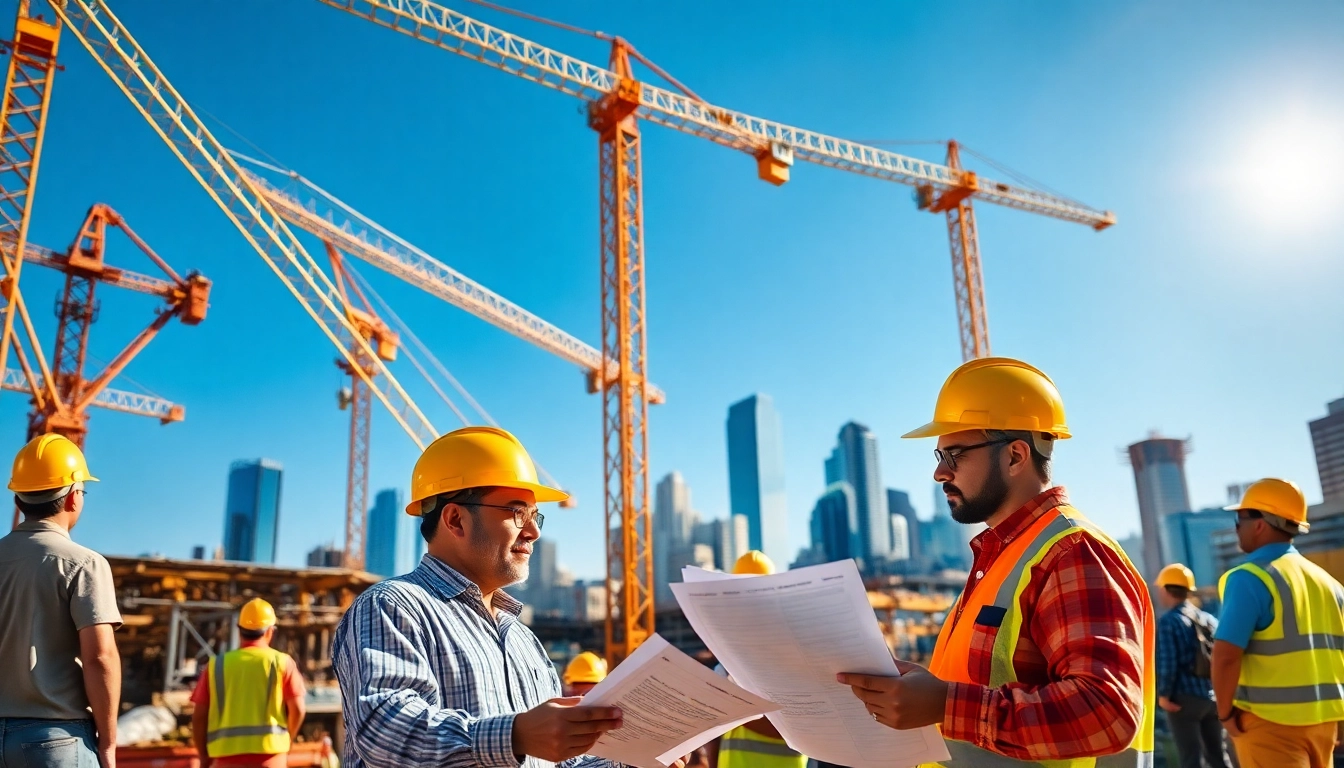
Harnessing Growth: Essential Strategies in Austin Construction
Understanding the Austin Construction Landscape
1. Historical Context of Austin Construction
Austin, Texas, has transformed significantly over the decades, which is mirrored in its construction landscape. Initially known for its live music scene and vibrant culture, Austin’s growth exploded with technology upgrades and economic opportunities in the late 20th and early 21st centuries. Originally a sleepy town, it began to attract individuals seeking a higher quality of life, a trend that has continued to drive Austin construction. As multitudes surged into the area, so did the need for residential spaces, commercial buildings, and infrastructure improvements.
Early construction efforts primarily involved single-family homes and small business developments, reflecting its demographic. However, as the city became a tech hub, larger, more intricate projects started to take center stage. This dynamic shift was marked by high-rise buildings, mixed-use spaces, and community-focused developments. Each project not only embodies the architectural ethos of its time but also tells stories of the layers of cultural and economic impacts entrenched in its foundation.
2. Current Trends Shaping the Industry
Today, the Austin construction industry is on the cusp of substantial evolution shaped by various trends:
- Urbanization and Density: As population density increases, there is a necessity for vertical development. High-rise apartment complexes and mixed-use facilities are becoming common to utilize available space more efficiently.
- Sustainable Building Practices: From energy-efficient materials to waste reduction strategies, sustainability isn’t just a trend but a necessary practice. Austin continually emphasizes green buildings and eco-friendly construction to align with broader climate goals.
- Smart Technologies: Integration of smart home technology and building management systems is shaping construction to not only meet modern convenience but also to promote energy efficiency and security.
3. Roles of Local Regulations and Zoning
The regulatory environment in Austin significantly impacts construction practices. Zoning laws, building codes, and permit requirements govern what can be built and where. The city’s regulatory framework aims to balance growth with environmental preservation and community needs. Zoning laws dictate the type of developments permissible, often prioritizing residential over commercial in certain areas to maintain community character.
Furthermore, regulations pertaining to ecological concerns require builders to assess the potential environmental impact of their projects. Compliance with both local and state regulations not only affects project timelines but also influences the design as developers must adhere to standards that protect Austin’s unique ecosystem.
Key Challenges Facing Austin Construction
1. Labor Shortages and Skills Gap
Despite the rapid growth in Austin construction, the industry faces substantial labor shortages. The aging workforce combined with a lack of skilled laborers entering the field has created a pronounced skills gap. Moreover, the demand for skilled labor continues to grow, leading to an inevitable increase in project costs and timelines.
Many construction companies are investing in training programs and partnerships with local schools and universities to cultivate a new generation of skilled workers. This creative approach not only addresses immediate labor shortages but also lays the groundwork for long-term workforce stability.
2. Environmental Considerations and Sustainability
As awareness around climate change and environmental conservation rises, Austin’s construction industry must navigate stringent ecological standards and community expectations. Projects today must prioritize sustainable practices, including resource conservation, minimal waste, and eco-friendly materials.
Developers are increasingly expected to implement green building certifications such as LEED (Leadership in Energy and Environmental Design), which not only appeal to environmentally conscious buyers but can also lead to significant energy savings in the long run.
3. Navigating Supply Chain Disruptions
Supply chain issues that emerged globally have ripple effects even within local Austin construction. Shortages of essential materials, coupled with rising costs, have made it significantly harder for contractors to stay on budget and meet deadlines.
Pushing through these challenges involves strategic purchasing, maintaining good relationships with suppliers, and efficient inventory management. Establishing contingencies for materials can safeguard projects against future disruptions, ensuring continuity in progress.
Best Practices for Successful Projects
1. Effective Project Management Techniques
Effective project management is vital for navigating the complexities of the construction industry in Austin. Utilizing tools such as Gantt charts or project management software can lead to better planning, scheduling, and oversight. Regular communication with stakeholders and team members is essential to ensure that timelines and budgets are adhered to.
Moreover, project managers should adopt agile methodologies that allow for flexibility. Given the speed of changes in the Austin construction landscape, being adaptable can be a significant asset in addressing unexpected issues swiftly.
2. Cutting Costs Without Compromising Quality
Cost management is a crucial component without sacrificing quality. One such method involves thorough planning and risk management. By identifying potential risks early on, such as material shortages or weather-related delays, teams can devise contingency plans that minimize additional expenditures.
Additionally, investing in high-quality materials can offer durability benefits that save money in the long term, reducing the need for repairs or renovations down the line.
3. Leveraging Technology in Construction
The integration of advanced technologies in the Austin construction industry is revolutionizing project delivery. Building Information Modeling (BIM), for example, allows for creating accurate project models that can forecast potential issues and costs before construction begins.
Additionally, employing drones for site surveys enhances project monitoring and planning while ensuring safety compliance through accurate data collection. By harnessing technology, construction projects can become more efficient, cost-effective, and less prone to errors.
Impact of Austin Construction on Communities
1. Economic Benefits of New Developments
The economic impact of construction projects stretches beyond immediate job creation. New developments stimulate local economies by attracting businesses, facilitating tourism, and increasing property values. As new facilities open, they create additional demand for services, leading to further economic growth.
Moreover, construction-related activities often result in increased tax revenue for local governments, which can be reinvested into community services and infrastructure improvements, supporting the health and vitality of the community.
2. Enhancing Infrastructure and Connectivity
Improved infrastructure is one of the most significant benefits of construction projects. In Austin, new developments can lead to upgraded roads, public transport options, and technology-driven utilities, thus enhancing the quality of life for residents.
Effective infrastructure not only makes daily commutes smoother but also supports sustainable urban growth, accommodating the city’s expanding population, and fostering connectivity within the community.
3. Community Engagement and Support Initiatives
Community engagement is critical in construction projects to ensure they meet the needs of local residents. Developers and contractors are increasingly prioritizing input through town hall meetings and surveys, allowing residents to voice their opinions and concerns.
Additionally, supporting local initiatives—whether through sponsoring local events or partnering with community organizations—can engender a sense of goodwill and collaboration, leading to more successful, accepted projects.
Future Directions of Austin Construction
1. Innovations to Watch in the Coming Years
The future of Austin construction looks promising as innovations continue to shape the industry. Emerging technologies such as augmented reality (AR) and virtual reality (VR) are poised to revolutionize design and planning processes. These technologies provide immersive experiences that allow stakeholders to visualize projects before construction begins, minimizing costly changes.
Additionally, modular construction methods are gaining traction, allowing for prefabricated sections to be assembled on-site, thereby significantly reducing construction times and costs.
2. The Role of Smart Technologies
Smart technologies are not just a trend but an essential component of future developments. The use of IoT (Internet of Things) devices enables buildings to function more efficiently, managing energy consumption and enhancing safety features autonomously. In Austin, smart cities that prioritize innovation will likely lead to intelligent zoning and planning measures that create a more integrated living environment.
3. Adapting to Climate Change Resilience
Climate resilience in construction is becoming a non-negotiable aspect of new developments. As Austin faces unique environmental challenges, there is a growing emphasis on building projects that can withstand weather extremes and promote environmental sustainability. Future construction will likely incorporate climate-responsive designs that address concerns such as flooding and rising temperatures, ensuring that Austin remains livable and vibrant for generations to come.
